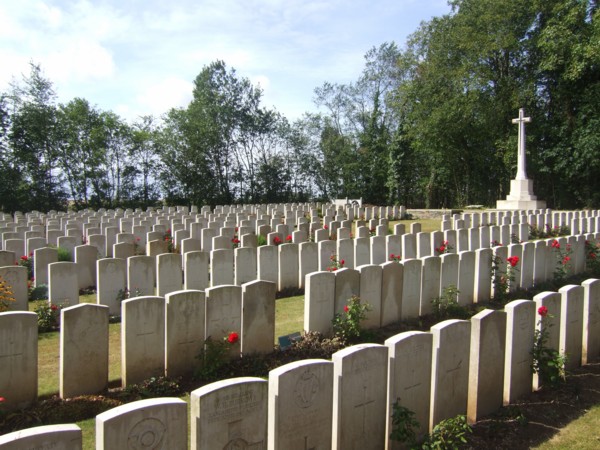Albert Ernest Farrar
Date of birth: 1891
Date of death: 25.8.1917
Area: Newton Hill
Regiment: West Yorkshire (Prince of Wales’s Own)
Family information: Son of John and Eunice Farrar
Rank: Corporal
Service number: 17/979
War Service
He was assigned to the 17th Battalion, Prince of Wales’s Own (West Yorkshire Regiment). The 17th Battalion had been formed at Leeds, in December 1914, as a “Bantam Battalion”. These battalions were manned by troops who were physically fit, but under the regulation minimum height of 5ft 3ins. and their ranks contained many miners. The 17th West Yorks. early training was in North Yorkshire, before moving to Salisbury Plain, in August 1915
On the 1st February 1916, the 17th West Yorks, attached to 106th Brigade, 35th Division, landed at Le Havre. The battalion later linked up with other units of the 35th Division, which was concentrated east of St Omer. After some initial training in trench warfare, the 35th Division moved into the line in the Neuve Chapelle and Armentieres Sector. Here they remained for some three months, before moving towards the Somme battlefield.
The 17th West Yorks. was not involved in any attacks during their time on the Somme battlefield, when for a time they came under the orders of the 26th Brigade, 9th Division. The 17th Battalion was engaged on carrying duties, burial detail and salvage work. However, from the 13th to 31st July, they incurred 314 casualties, such was the severity of the shelling. On the 31st August 1916, the battalion left the Somme for the Arras Sector.
During the early part of 1917, the 35th Division was engaged in the pursuit of the withdrawing German Army. The enemy was moving eastwards, towards their heavily fortified defensive positions, known as the Hindenburg Line. In the wake of their withdrawal, the enemy left a devastated countryside, with roads, railways, bridges and anything likely to be of use to their pursuers, destroyed.
In August 1917, the 17th West Yorks.were operating rotational tours in the Ronssay area. When not in the front line, the battalion was deployed to working parties, digging cable trenches and constructing dugouts. On 17th August, after a short tour in the line, most of the battalion was relieved and moved back to Ronssay, in preparation for a Divisional attack against Gillemont Farm and the Knoll. However, one Company remained in the line at Cat Post. On the following day, four men from the battalion were killed when engaged on working parties with the Royal Engineers.
The Divisional attack, made on the 19th August, was successful and Gillemont Farm and the Knoll were held against enemy counter-attacks. However, the men of the 17th West Yorks. holding Cat Post came under enemy artillery fire during the day and suffered a number of casualties.
The 17th West Yorks. remained in the Ronssay area until the 24th August, when they moved to Villers-Faucon. The following day, the 25th August, the 17th Battalion was ordered to St Emilie to support a counter-attack on Gillemont Farm, which the enemy had recaptured earlier that morning
It was around this time that Corporal Albert E. Farrar received the wounds from which he died, on 25th August 1917. He was buried in the Communal Cemetery at Villers-Faucon, a village 12 km south-east of Peronne. The Communal Cemetery contains the graves of 227 Commonwealth soldiers, killed between February and August 1917, 5 of whom are unidentified.
Family Life
Albert Ernest Farrar was the third child and second son of John Farrar and his wife Eunice, formerly Heptonstall. He was born in 1891, when his parents were living at Lofthouse Gate, having recently moved from Leeds Road, Whitwood. The family later moved to the Manchester area, where a fourth child was born. By 1911, the family had returned to the Outwood area and was living at West View, Newton Hill. His father, John Farrar had previously worked as a publican and general labourer, but was now employed as a colliery banksman. At this time Albert Ernest Farrar was employed as a colliery pony driver, he was also a member of the Outwood Bible Class and of the Zion Chapel RSA.
In January 1915, when employed at Parkhill Colliery, Albert Edward Farrar joined the army.
 Villers-Faucon Communal Cemetery
Villers-Faucon Communal Cemetery

